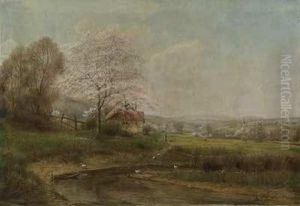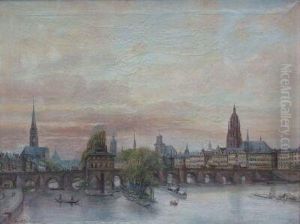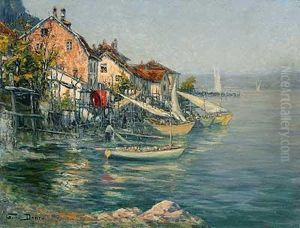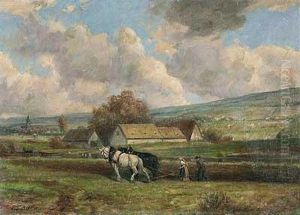Julius Dielmann Paintings
Julius Dielmann was a German-born American artist, primarily known for his landscape and portrait paintings. Born on February 5, 1829, in Hanau, Germany, Dielmann received his artistic training at the Städel Art Institute in Frankfurt, where he studied under the tutelage of influential artists such as Jakob Becker and Philip Veit. His early work was shaped by the academic art traditions of Europe, with a focus on precision and technique.
Dielmann immigrated to the United States in the mid-19th century, settling in Texas around 1851. His move was part of a larger wave of German immigration to the area, and Dielmann quickly became an important figure in the burgeoning art scene of the region. He worked and lived in San Antonio, where he became a central figure in the cultural life of the city, contributing to the development of the arts community there.
In the United States, Dielmann's work began to reflect the new landscapes and subjects he encountered. His Texas landscapes and scenes of local life became particularly well-regarded, capturing the unique character of the American Southwest during a period of significant change and growth. In addition to his landscape paintings, Dielmann was also a respected portraitist, creating likenesses of many prominent local figures of his time.
Dielmann's influence extended beyond his own work. He was a mentor to other artists and took an active role in promoting the arts in Texas. He was one of the founders of the San Antonio Art Club, which was instrumental in establishing a more structured art environment in the city. Despite the challenges of working in a relatively isolated art market, Dielmann achieved a level of success and recognition that helped pave the way for future generations of Texas artists.
Julius Dielmann passed away on March 18, 1914, in San Antonio, Texas. His legacy is preserved in his contributions to the cultural fabric of San Antonio and the artistic heritage of Texas. Today, his works are considered important in the study of 19th-century American art, particularly in the context of the cultural exchange between Europe and the United States, and the representation of the American West.



